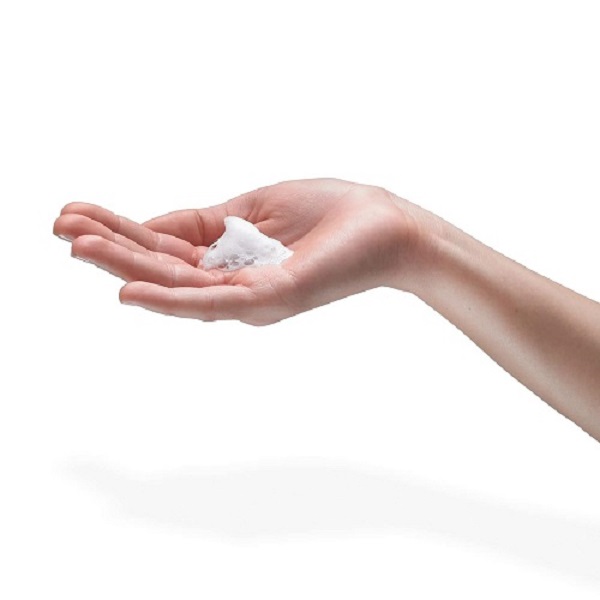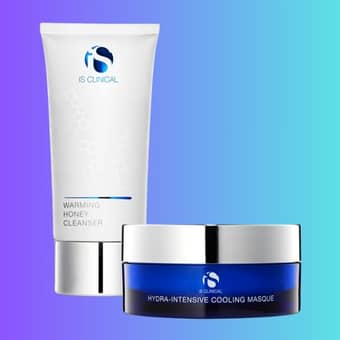Germs are everywhere, and proper hand hygiene is crucial for your health and safety. You might wonder: How effective are foam hand cleaners at killing these pests? This guide will explore the science of foam hand cleaners. We will examine their germ-killing effectiveness and the factors that affect it. We’ll also provide tips to improve your hand-cleaning routine. You’ll know, by the end, how foam hand cleaners can help you stay clean and protect against germs.

Table of Contents
- I. Types of Foam Hand Cleaners
- II. Factors Influencing Effectiveness
- III. Step-by-Step Guide on Using Foam Hand Cleaner
- IV. Pros and Cons of Foam Hand Cleaners
- V. Tips for Maximizing Germ Removal
- VI. Common Misconceptions About Foam Hand Cleaners
- Choosing the Right Foam Hand Cleaner for Optimal Hygiene
- FAQ
Key Takeaways:
-
Foam texture enhances coverage. It allows for an even application. It ensures all hand surfaces contact the disinfectant, which helps remove germs.
-
Alcohol concentration matters. Foam hand cleaners work best with 60% or higher alcohol. These products have proven their ability to kill more germs.
-
Proper usage is crucial. For the greatest effect, rub hands for 20 seconds when using foam hand cleaner. This will kill all germs.
I. Types of Foam Hand Cleaners
To test foam hand cleaners’ germ-killing ability, you must know their types. Each foam hand cleaner has a unique formula. It can affect its germ-killing power. Here are some common types:
| Alcohol-Based Foam Cleaners | Highly effective in killing a wide range of germs. |
| Non-alcoholic Foam Cleaners | Gentler on skin but may be less effective against certain germs. |
| Antibacterial Foam Cleaners | Designed specifically to kill bacteria. |
| Natural and Organic Foam Cleaners | Made using natural ingredients, it is often preferred for sensitive skin. |
| Hydrating Foam Cleaners | Contain moisturizers to protect the skin from dryness. |
After exploring the types, you can better choose a foam hand cleaner that suits your needs.
1.1. Alcohol-Based Foam Cleaners
Alcohol-based foam cleaners are very popular. They have a high percentage of isopropyl or ethyl alcohol. This makes them very effective at killing germs. This cleaner transforms liquid into vapor, leaving surfaces completely clean. This is good for quick disinfection and convenience.
1.2. Non-alcoholic Foam Cleaners
Non-alcohol foam cleaners are a gentler option. They may not kill all germs as well as alcohol-based cleaners. But they often use less harsh chemicals. So, they are suitable for frequent use without irritating your skin.
Non-alcohol foam cleaners are best for sensitive environments. These include places for children and healthcare settings. They may have other antimicrobials or surfactants to lift dirt and germs from the skin.
1.3. Antibacterial Foam Cleaners

The primary aim of antibacterial foam cleaners is to target and kill bacteria. These products often have added ingredients for this purpose. They can enhance your hygiene routine.
Foam formulations allow for easy application and even coverage on the hands. But not all germs are bacteria. These cleaners target bacteria well. Yet, they may not be as effective against viruses and fungi.
1.4. Natural and Organic Foam Cleaners
If you’re worried about synthetic ingredients, choose natural, organic foam cleaners. They provide eco-friendly options. These products usually use plant-based ingredients to achieve cleanliness without harsh chemicals.
Natural and organic foam cleaners often include essential oils. They can kill bacteria and have a pleasant scent. These cleaners are usually biodegradable. They are gentler on sensitive skin. They provide a safe option that protects the planet.
II. Factors Influencing Effectiveness
One key element affecting foam hand cleaner’s germ removal is various factors, such as:
-
Foam concentration levels
-
Duration of the application
-
Technique of application
-
Surface type and contamination level
This understanding can guide you in maximizing the effectiveness of foam hand cleaners.
2.1. Foam Concentration Levels
Foam hand cleaners with more active ingredients can kill germs better. Choose a cleaner with the right foam concentration. It will meet your hygiene needs and remove more germs.
2.2. Duration of Application
Hand cleaner potency relies on exposure time to skin surfaces. A longer duration improves cleaning and ensures that it kills germs.
Use foam hand cleaners for about 20 seconds. That’s the same as with traditional handwashing. You must pay attention to this timeframe. Germ removal success hinges on this factor. For best results, wash all areas of your hands. This includes between your fingers and under your nails.
2.3. Technique of Application

Using foam hand cleaner, with the right technique, can boost its germ-fighting power. Foam application brings all hand surfaces into direct contact with the cleaner.
The key to effective application is to cover every nook and cranny of your hands. Use a thorough scrubbing motion. This will spread the foam and let it kill the germs. Pay attention to often-overlooked areas, like the thumbs and fingertips.
2.4. Surface Type and Contamination Level
Knowing the surfaces you’re cleaning and the contamination level is key. It affects how well foam hand cleaners work. Certain surfaces may harbor more germs, necessitating different cleaning approaches.
The surface material, like plastic or stainless steel, can affect the foam cleaner. For example, porous surfaces may absorb the cleaner, reducing its effectiveness. Knowing the surface’s nature helps you adjust your cleaning methods. This improves germ removal.
III. Step-by-Step Guide on Using Foam Hand Cleaner
Mastering hand hygiene means understanding proper foam hand cleaner application techniques. Follow this step-by-step guide to ensure you’re maximizing its germ-fighting potential.
| Step | Action |
| 1 | Preparing Your Hands |
| 2 | Applying the Foam |
| 3 | Rubbing Technique |
| 4 | Rinsing and Drying Hands |
3.1. Preparing Your Hands
If your hands are dirty or contaminated, rinse them with water before using foam hand cleaner. This helps the cleaner work better on any germs or bacteria. Remove any jewelry or accessories that could trap dirt. This will enhance cleanliness.
3.2. Applying the Foam

Applying the foam is the next crucial step in your hand hygiene routine. Use a dime-sized amount of foam hand cleaner on your dry hands. Adjust as needed. Make sure you have covered all areas of your hands to maximize effectiveness.
To use your foam hand cleaner, apply the right amount. Insufficient amounts fail to kill germs, and excessive use is wasteful. You need enough to create a good lather. It must cover all surfaces of your hands, including between your fingers and under your nails.
3.3. Rubbing Technique
Even after you’ve applied the foam, the method you use to rub your hands together matters. Cover all areas, including the backs of your hands. Pay special attention to your fingertips and nails. This technique helps to dislodge germs and ensures thorough cleansing.
Mastering proper hand-rubbing skills helps cut germs completely. Rub your hands together for at least 20 seconds. Use a mix of motions—up and down, circular, and between fingers. This will exfoliate all surfaces and remove germs.
3.4. Rinsing and drying hands.
Any foam hand cleaner requires thorough rinsing for optimal effectiveness. After the rubbing time, rinse your hands under clean, running water. This will wash away the foam and the lifted germs. Make sure to do this until no residue remains.
Cleaner hands come from proper rinsing and drying techniques. Post-rinsing, always dry your hands using a clean towel or air dryer, as damp skin can harbor germs. If you are using a towel, ensure it is clean to prevent recontamination.
IV. Pros and Cons of Foam Hand Cleaners
For anyone thinking of using foam hand cleaners, it’s vital to weigh their pros and cons. Below is a breakdown of these points to help you make an informed decision.
Pros and Cons Summary
| Pros | Cons |
|---|---|
| Easy to apply with one hand | May not be as effective on heavily soiled hands |
| Quick-drying formula | Some formulations contain alcohol, which can dry skin |
| High foam capability helps with coverage | Limited effectiveness against certain types of germs |
| Appealing scents make usage pleasant | Potential for allergic reactions to fragrances |
| Convenient for on-the-go cleaning | Not a substitute for washing with soap and water |
4.1. Advantages of Foam Hand Cleaners

Foam hand cleaners provide various benefits that you will likely appreciate. These products are easy to apply. You can dispense and use them with one hand. Their high foam capacity ensures your hands are well covered. This improves germ removal. Formulas vanish in a flash. They’re great for on-the-go use. They also have a pleasant scent to enhance the experience.
4.2. Disadvantages of Foam Hand Cleaners
A common issue with foam hand cleaners is that they may not work well on very dirty hands. The foam can struggle to penetrate dirt and grime, reducing its germicidal effectiveness. Some skincare formulas include alcohol, causing skin dehydration with regular application. Foam hand cleaners are convenient. But, they are not a good substitute for washing hands with soap when dirt is present.
Pros of foam hand cleaners include their convenience and ease of use. Their capabilities reveal gaps when requiring meticulous hand cleaning. When your hands are very dirty or greasy, you may need to resort to soap and water for effective cleaning. Knowing these downsides will help you decide. Use foam hand cleaners sometimes, and stick to traditional methods at other times.
V. Tips for Maximizing Germ Removal
Your hand hygiene is key to preventing germs. Using a foam hand cleaner can enhance it. To maximize germ removal, consider the following tips:
-
Apply an adequate amount of foam to cover all surfaces of your hands.
-
Rub your hands for at least 20 seconds. Focus on the areas between your fingers and under your nails.
-
Use clean towels or air dryers to dry your hands after washing.
-
Encounter contaminated surfaces? Perform the action again. Do not touch your face. Apply again.
-
Be consistent by making hand cleaning a regular habit throughout your day.
Techniques and timing are vital. Germ removal in foam hand cleaners relies on their composition.
5.1. Complementing foam cleaners with other methods.

Other effective hand hygiene methods include washing with soap and water. This is especially important after using the restroom or before eating. Using foam hand cleaners with proper handwashing techniques ensures the best germ removal. It also adds protection against pathogens. Wipe down high-touch areas with disinfectant-soaked cloths on a routine basis.
5.2. Storage and End Dates
Store your foam hand cleaner in a cool, dry place. Keep it out of direct sunlight. Always check the package’s expiration date. It ensures you’re using an effective product.
With proper storage, you can prolong the effectiveness of your foam hand cleaner. Don’t expose it to extreme temperatures. It can affect its efficacy. Check the expiry date. Using expired products may not kill germs as expected.
5.3. Choosing the Right Foam Hand Cleaner for Your Needs

If you’re unsure which foam hand cleaner to choose, pick one with at least 60% alcohol. It will remove germs best. If you have sensitive skin, choose a moisturizing hand soap.
It’s crucial to find a foam hand cleaner that suits your specific lifestyle and needs. For sensitive skin, choose alcohol-free or skin-conditioning formulas. The right product can improve hand hygiene. It makes it easier and more effective. This can encourage better hygiene practices in your daily routine.
VI. Common Misconceptions About Foam Hand Cleaners
Despite their popularity, misconceptions about foam hand cleaners’ effectiveness persist. Many believe that only liquid soaps or gels can kill germs. Foam hand cleaners can be as effective as soaps. Designers created these products to provide a thorough clean. Harness them to release the greatest power of active ingredients.
6.1. Myths vs. Facts
Some myths say foam hand cleaners are less effective than washing hands. Research demonstrates foam’s equal potency in eliminating bacteria and viruses. We must recognize that a product’s quality, not its form, determines its ability to fight germs.
6.2. Understanding Germ Resistance

Many worry that germs may become resistant to hand sanitizers. It is true that overusing some antibacterial agents can cause resistance. But foam hand cleaners usually contain ingredients that kill germs. These cleaners prevent microbe transmission when they form an intact barrier.
Hand hygiene is crucial for preventing illness. Foam hand cleaners work by breaking down the cellular structures of germs. Lather well and let the foam stay on your hands for the recommended time. This boosts its germ-fighting power. Don’t worry about resistance. Focus on good hand hygiene. It’s key to your health.
Choosing the Right Foam Hand Cleaner for Optimal Hygiene
Foam hand cleaners cut germs when used in the correct manner. Completely blanket the surface with a dense, bulky coat of foam. Allow it to contact your skin. This will reduce bacteria and viruses. Your product choice matters. Pick one with proven antibacterial properties. It will boost your hygiene routine.
FAQ
Q: How effective is foam hand cleaner at removing germs compared to regular hand soap?
Foam hand cleaners are as effective as liquid soaps at removing germs. Both types of products lift dirt, grease, and germs from the skin. Their effectiveness depends on the hand cleaner’s formula and its active ingredients. Handwashing’s effectiveness also depends on how well people wash their hands. Foam hand cleaners can be fun, especially for kids. This may encourage more frequent handwashing. Clean your hands completely to get the best outcome. Scrub for at least 20 seconds.
Q: Does foam hand cleaner kill viruses and bacteria, or does it remove them?
Foam hand cleaners with antibacterial agents kill specific viruses and bacteria on contact. Ingredients like alcohol or antimicrobial compounds decimate germ populations. But not all foam hand cleaners are equal. Some may only cleanse without adding antibacterial protection. So, it’s crucial to check the label for active ingredients. Also, ensure it is for germ killing if that’s a concern.
Q: Can foam hand cleaners be as effective in situations where hands are visibly soiled?
Foam hand cleaner can reduce germs. But it is less effective on very dirty or contaminated hands. If there is visible dirt, grease, or organic matter, wash with water and regular liquid soap. Foam cleaners may not provide the same level of cleansing in these situations. Use foam hand cleaner for routine hygiene when hands are not dirty. For tougher cleaning, use soap and water.
Last Updated on August 14, 2025 by Holistic Healths





